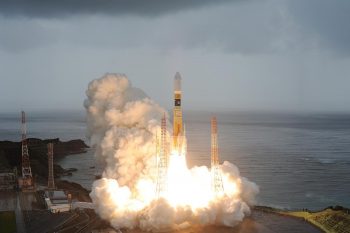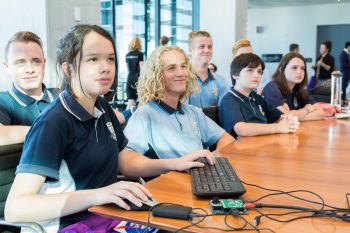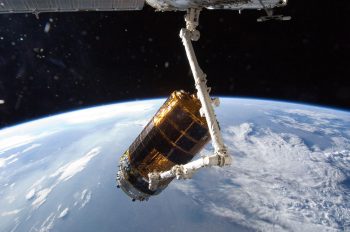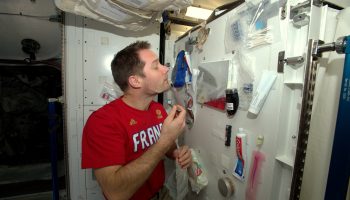By Solange Cunin, CEO and founder at Cuberider
On December 16 ESA astronaut Thomas Pesquet installed a NanoRacks module in the NanoRacks Platform for powered module ops in the JPM EXPRESS Rack Locker. The astronaut procedure for this operation is titled “Generic use for any powered NanoRacks Module”, however this time it is far from generic: it contained the first-ever Australian payload to be launched to space!

Launch of the JAXA H-11B rocket from Tanegashima (Japan). Credits: JAXA/NASA
One week earlier, 1000 Australian students become the first Australian generation to embrace space. When the JAXA H-11B rocket launched from Tanegashima, Japan, it carried the hopes of 1000 Australian students and two very proud co-founders.
These intrepid teenagers had spent a year in their classrooms learning how to write code, many for the first time. For all of us it was a year of challenges; for them learning to code in Python, for us learning to run a space business. As the rocket went up, it was not just a test for their skills but in Cuberider’s ability to be able to inspire them.

Australian students Learning how to code for Cuberider’s project. Credits: Cuberider
Our payload, with international standards was simple, a piece of hardware with 10 sensors and Raspberry Pi unit. The hardware is similar to that of AstroPi in Europe, which shares the common goal of inspiring youth with their own space missions.
These students were not only learning to conduct science experiments and code, they were also participating in Australian history. This was the first time Australia had ever sent up a payload to the International Space Station. Australia’s long history in space has more or less been mainly confined to military and research. The nation has often worked in isolation, separate from the rest of international space activities, so this mission marks the start of the Australian relationship with the Space Station community, and it was a group of teenage school students that helped make it happen.

HTV-6 and its payload being captured. Credits: JAXA/NASA
The mission would not be possible without the astronauts on board the Station who take care of the payload once it is up. For this mission, it was European astronaut Thomas Pesquet, who helped lead Australia into space, both capturing the HTV-6 vehicle and installing the payload.
On December 13, four days after lift off, the H-11B payload was successfully captured and berthed by Thomas to the Station.
The students could breathe a sigh of relief and be confident that there were no dogs to eat their homework.





Discussion: 3 comments
NOW understand …All explained. good blog .future book. .who is credit photos space?
Amazing article and video. What an overwhelming feeling it must be for the Australian students to know, that their homework has arrived on ISS.
Bravo Thomas ! Nous t accompagnons tout en t admirant !